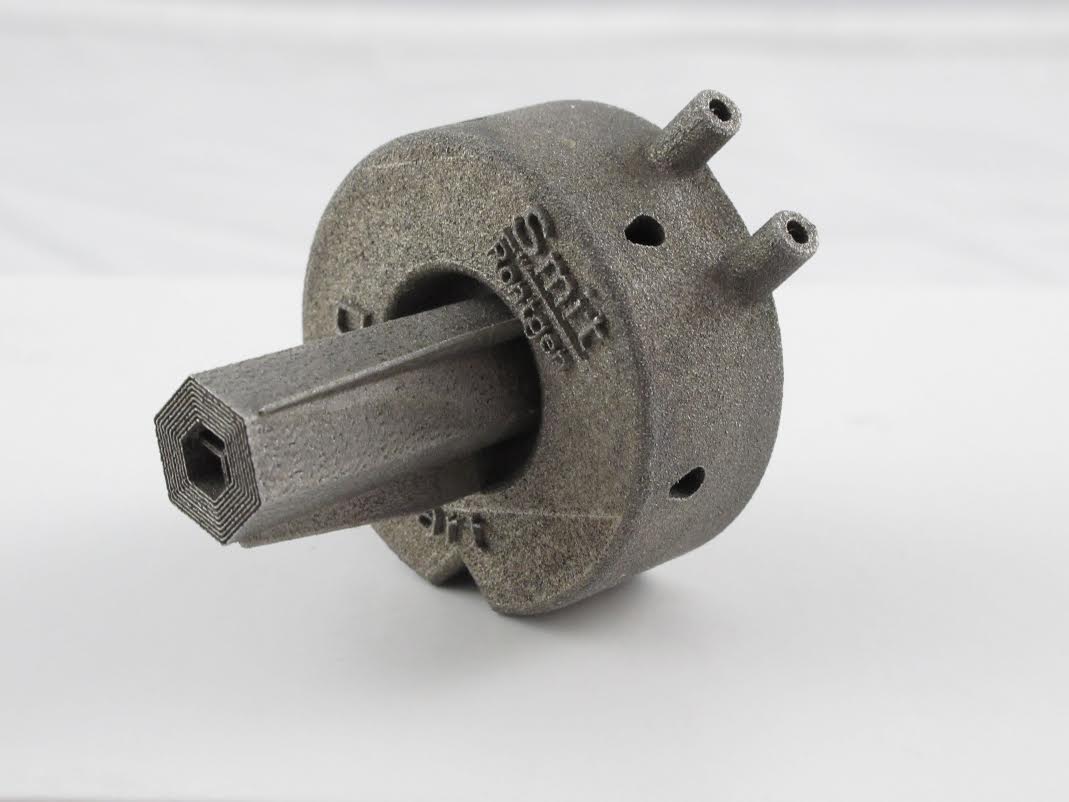Philips Brand, Smit Röntgen Revolutionizes the Metal Additive Manufacturing Industry by 3D Printing Pure Tungsten Parts
The industry predominantly uses metal additive manufacturing for prototyping or the production of small quantities. Smit Röntgen opens doors for large volume industrial manufacturing of 3D printed pure Tungsten parts.
 Medical Imaging component manufacturer Smit Röntgen, a Philips brand, is a leading manufacturer capable of controlled processing pure Tungsten, via the additive manufacturing technique Powder Bed Laser Melting. This additive process is characterized by constructing a three-dimensional product from a digital design, by selectively solidifying thin layers of pure Tungsten, the metal with the highest melting point of 3422 degrees C.
Medical Imaging component manufacturer Smit Röntgen, a Philips brand, is a leading manufacturer capable of controlled processing pure Tungsten, via the additive manufacturing technique Powder Bed Laser Melting. This additive process is characterized by constructing a three-dimensional product from a digital design, by selectively solidifying thin layers of pure Tungsten, the metal with the highest melting point of 3422 degrees C.
A decade ago, Smit Röntgen started to research the potential of additive manufacturing pure Tungsten products, as a business opportunity. By collaborating with one of the major system builders in the additive manufacturing industry and partnerships with specialists in the field, extensive know-how is jointly developed on every step of the process.
“From process development to industrialization, Smit Röntgen is focused on creating added value to the industry by developing and manufacturing parts for medical applications, in particular high precision parts for X-ray collimation targeting the CT/PET/SPECT market. In addition, we also started to design and produce parts for industrial use,” says Harry Kleijnen Head of Development Smit Röntgen located in Best, The Netherlands.
Smit Röntgen is highly focused on innovation, a heritage of Royal Philips N.V. To further develop the technology, it has invested in production, post-processing and measurement equipment. Key for additive manufacturing process development, is to include verification and validation in-house to ensure short design cycles. This is fundamental for the functionality of the process and an expertise that should not be underestimated. With this new, unique and patented technology, Smit Röntgen is proficient in manufacturing for example, highly complex concave or bracing parts out of pure Tungsten.
The thought behind additive manufacturing surpasses conventional techniques, by creating new customized innovative parts with primary advantages like design freedom, part variation and low set-up costs. Smit Röntgen is now able to perfectly and seamlessly accommodate to individual customer needs and wants.
“When talking to major players in medical and non-medical fields, it becomes evident that being able to 3D print pure Tungsten parts does attract global attention. By mastering this technique, the possibilities for creating new innovative products and niche markets are endless,” explains Pieter Nuijts responsible for Marketing and Sales of Smit Röntgen in Best, The Netherlands.
If you are currently developing a product or have an innovative idea, and would be interested to discuss your ideas with Smit Röntgen? You may contact Pieter Nuijts or Harry Kleijnen.
Let us know what you think about this revolutionary new metal additive manufacturing method in the 3D Printing of Tungsten Parts forum thread on 3DPB.com
Subscribe to Our Email Newsletter
Stay up-to-date on all the latest news from the 3D printing industry and receive information and offers from third party vendors.
You May Also Like
NSF Awards Kentucky $1M for Advanced Manufacturing
The National Science Foundation has awarded a $1 million grant to the University of Louisville for the Advancing Manufacturing and Building Construction Technologies (NSF AMT) project. This initiative is part...
3D Printing News Briefs, May 11, 2024: 3D Printed Stent, Tower, Sculptures, & More
We’re starting off with medical research in today’s 3D Printing News Briefs, as researchers in Korea used CT images and 3D printing to fabricate an educational simulator for a mastoidectomy....
3D Printing Unpeeled: Wind Turbines, Probiotics and Lenses
TPI Composites, ORNL and Ingersoll Rand are working to make wind turbine tooling segments that can be 18.3 meters long. These elements also include resistive wires that help keep the...
Tethon 3D Releases Cost-effective Bioprinter
Tethon 3D, known for its ceramic-loaded DLP materials, custom resins, and DLP 3D printers, has recently released a bioprinter. Vat polymerization printers like DLP systems have been widely used by...


































